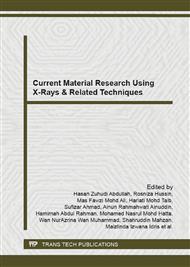p.460
p.465
p.470
p.475
p.479
p.484
p.488
p.493
p.498
Quantitative X-Ray Diffraction Analysis of Anhydrous and Hydrated Portland Cement – Part 1: Manual Methods
Abstract:
Portland cement is one of most important construction and building materials and its properties depend strongly on the mineralogical composition. Consequently, accurate analysis of the mineralogical composition of anhydrous Portland cement is crucial for both product quality control and optimisation of performance following initial hydration. In the latter sense, analysis of the mineralogical composition of hydrated Portland cement paste is critical to understand (1) the mechanism and kinetics of hydration of unmodified pastes and those modified with additives and (2) the resultant properties of cement pastes, mortars, and concretes. Such analyses typically are undertaken by quantitative X-ray diffraction (XRD).The present work reviews current practices in quantitative XRD analysis of anhydrous and hydrated Portland cement. To this end, Part 1 of this two-part work briefly mentions the point-counting method and the Bogue calculation method. The more commonly applied internal standard method and reference intensity ratio (RIR) method are discussed in more detail.
Info:
Periodical:
Pages:
493-497
Citation:
Online since:
February 2015
Authors:
Price:
Сopyright:
© 2015 Trans Tech Publications Ltd. All Rights Reserved
Share:
Citation:


